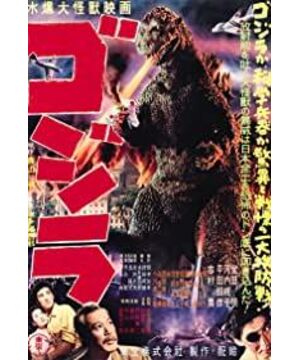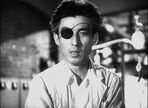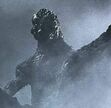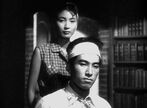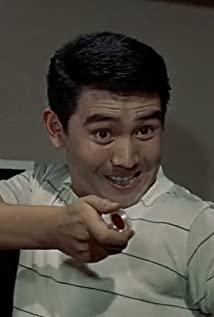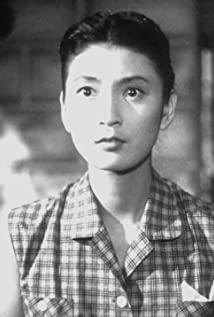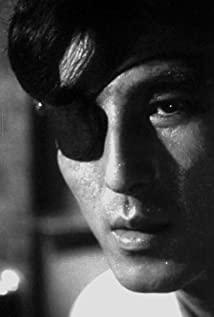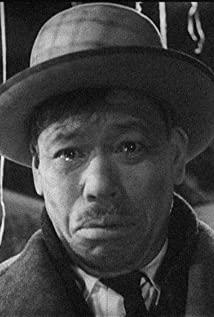Author: MA
On July 29, 2016, the well-known "Godzilla" series will launch the 29th work "True Godzilla", with Hideaki Anno as the screenwriter and chief director, and Shinji Higuchi as the director. As a new work of the Japanese "Godzilla" after a 12-year absence, it has also gathered top Japanese movie stars such as Hasegawa Hiroki, Takenouchi, Ishihara Rimi, and at the same time, in the newly announced trailer, the entire production team is very concerned about this. The hard work devoted to this work can also be seen. What kind of work the two animation masters will present to the audience, and what new chapter it will bring to the Godzilla series of films, has become a topic of eager attention recently by movie fans.
62nd year of the birth of Godzilla's movie is also the year when the Japanese special photo milestone Godzilla movie is resurrected again. As this article, in addition to reviewing the history of Godzilla over the past few decades, there is also Godzilla has worked hard for him from the early days of his birth to the present.
Finally, I will review the historical relationship between the special monster movie and Japanese popular culture. The existence of the symbol "Godzilla" in cultural history is also worth exploring now. For this reason, not only Toho’s Godzilla, but also monster movie works other than Toho movies will be mentioned accordingly. Through the horizontal comparison of monster movies in different periods with the Godzilla series of movies, you can experience the special Godzilla. Historical status and far-reaching influence.
1. The origin of Godzilla
In 1954, due to the "Fifth Fulong Maru Incident" (the Fifth Fulong Maru was a Japanese ocean-going tuna boat that suffered the death of its crew due to the high-energy radioactive dust generated by the US test explosion of a hydrogen bomb on the Bikini Island Atoll) As a result, a fierce anti-nuclear weapon movement broke out in Japan. Against this background, Toho Film’s producer Tomoyuki Tanaka had the intention to make a special film with a socially reflective nature. After constant thinking and consideration, he evolved to make a movie similar to the American movie "Atomic Monster." (The Beast From 20,000 Fathoms) concept of a nuclear radiation monster movie. At that time, the genius producer Tsuburaya Eiji who was also in Toho Movies was also thinking of shooting a monster-themed movie, a proposal for a special movie with a big octopus monster. In the fierce competition between these two proposals, the proposal of nuclear radiation dinosaur monster was finally adopted by Dongbao Film Company-it was the first beginning of the "Godzilla" series of movies. On the other hand, even though Eiji Tsuburaya's proposal was unsuccessful, he did not completely give up his idea. The concept of the big octopus monster has been maintained until Eiji Tsuburaya made other works in the future, and appeared as a powerful monster in his films many times.
few months later, Tomoyuki Tanaka was the producer, Ishiro Honda was the chief director, and Eiji Tsuburaya was the special effects director. The "Godzilla" film produced by Toho's "Golden Trio" appeared on the screen. screen. When the film was first released, people didn't realize how influential the film would be. Unlike the big monsters fighting movies in the future, what this "Godzilla" reflected at that time was the fear caused by the nuclear radiation incident and the uneasy mood in Japan after the war. The film embodies the tense atmosphere in every detail and plot: the devastated streets of Tokyo after being attacked by Godzilla; ordinary people who are constantly evacuating and fleeing terrified; tremblingly watching the refugees of the nuclear radiation detector in the air-raid shelter; each This scene of seriously injured refugees being transferred for medical treatment, etc., reminded the Japanese audience of the time of the tragic and torment during the Pacific War. Later, in 1955, Toho Movies produced the anti-nuclear-themed movie "Records of Living Humans" (生きものの Records). At that time, Toho Movies continuously launched movies with anti-nuclear and anti-war themes, which triggered the domestic Intense discussion and controversy in the society.
In the special shooting sci-fi movies at that time, the unique shooting technique has also become a symbol of Japanese special shooting movies. Monster Godzilla is performed and filmed by actors wearing monster leather cases, which is different from the way of shooting frame-by-frame stop-motion animations with monster models in American monster movies at the time. Initially, Godzilla’s main creative team tried to use models to shoot frame-by-frame animations of monsters like Hollywood, but after the actual shooting began, it encountered a bottleneck, and a lot of time wasted and insufficient capital costs became the biggest problems. . In the end, the team decided to use the actor wearing a monster holster to shoot. The holster actors of the first Godzilla were Haruo Nakajima and Katsumi Tezuka. This tradition has continued to today’s Godzilla movies and even the entire Japanese special photo. . In the subsequent "King Kong vs. Godzilla" movie, Toho used the method of frame-by-frame stop-motion animation to shoot part of the scenes to pay tribute to the American monster movie "King Kong" (this film is regarded as a frame-by-frame stop-motion animation in the history of the movie). milestone).
The part of the original Godzilla film soundtrack was performed by Akira Ifobu, who used the cello as the soundtrack to reflect Godzilla's fearsome aura. The title that emerged from the roar of Godzilla at the beginning of the movie gave the audience an aural shock. With the rolling of the subtitles at the beginning of the movie, accompanied by Godzilla's deep roar and footsteps, the sound effects are very impactful, and the audience is immersed in this mysterious atmosphere of fear from the beginning. The movie music created by Akira Ifobu became another representative symbol in the movie. The strong melody of Godzilla's theme song penetrated into the minds of the audience. People called it "Song of Godzilla" (in fact, at the beginning of this song) It is used as the background music of human forces). In addition, another song called "ゴジラの猛威" was also known as "ゴジラのhorror" in the subsequent Godzilla series of movies. Not only on the screen, but also on the soundtrack, Godzilla impressed all the audiences who watched the movie at that time.
The climax in the first "Godzilla" movie is the scientist Dr. Daisuke Serizawa's use of an oxygen destroyer (オキシジェンデストロイヤー) to end Godzilla's bridge. Worried that the oxygen saboteurs would be abused by the military, Dr. Serizawa was determined to die with the design of saboteurs and died with Godzilla. Godzilla was decomposed by the power of the oxygen saboteurs, and his bones sank to the bottom of the sea. The last battle between humans and Godzilla paid all the price and used taboo weapons to destroy this nightmare monster brewed by humans. But at the end of the movie, Dr. Yamane Kyohei said to himself: "Godzilla will not disappear. As long as the hydrogen bomb experiment continues in the world, Godzilla's kind will one day appear in the world again." It was Godzilla's warning to mankind, and it was mankind who created Godzilla to destroy mankind. Dr. Serizawa showed another kind of scientist's consciousness. Only by disappearing from the world with demonic weapons and monsters in the same way can we usher in peace.
As the "Godzilla" movie became popular, Toho immediately decided to make a sequel to the Godzilla series, and then in 1955, "Godzilla's Counterattack" (ゴジラのCounterattack) appeared On the screen. At this time, the director has been replaced by Oda Kiyoshi, and the music director has been replaced by Sato Katsushika. The special effect director of the film is still in charge of Tsuburaya Eiji, and at the beginning of the film, the "stunt director Tsuburaya" is listed for the first time. The words "Eiji" (the first generation was responsible for "special technology"). In the production of the special film "Transparent Man" (Transparent World) in 1954, it was still called the "stunt director". At that time, the film poster of "Transparent Man" had been named "stunt director", and later related film materials also adopted the name "Special Technical Director" for the position of Tsuburaya Eiji. Later, in 1959, the movie "Submarine イー57降伏せず" became the last time he produced a work under the title of "special technology". Special effect director Eiji Tsuburaya became famous with the popularity of the Godzilla movie.
In "Godzilla's Counterattack", the second Godzilla that Dr. Yamane once warned about appears, and the series is called "Godzilla II." This second-generation Godzilla, which is similar to the original Godzilla, has been active on the screen of the Godzilla movie series for a long time. It is the generation of Godzilla with the most appearances. It has appeared in 14 consecutive Godzilla movies until 1975. In "Mechanical Godzilla's Counterattack", the history of the second generation of Godzilla came to an end.
In "Godzilla's Counterattack", Godzilla's opponent monster appeared. The ancient dinosaur Anguilas was also a monster that was radiated from nuclear weapons tests and mutated in modern times. The scene of the story in the original "Godzilla" movie was in Tokyo, but in "Godzilla's Counterattack", the stage of the battle between the two monsters was moved to Osaka. From this movie, a new tone of the monster movie was established, called the monster war mode (after this, Godzilla and other monster movies generally adopted the title and plot of monsters VS monsters). Although in "Godzilla's Counterattack" at the time, the monster battle was only a part of the transitional role in the middle of the plot, but it had a big impact on the audience and subsequent monster movies.
the second half of the movie, the plot once again returned to the conflict between humans and Godzilla. For the first time, there was a scene where human fighters and Godzilla were fighting. At the end of the plot, Godzilla was lured near the iceberg by the plane. Humans used tactics to make Godzilla buried alive by the iceberg and sealed Godzilla. This time the seal lasted for 7 years in the history of Godzilla movies, until "King Kong vs. Brother" In the movie "Sila", the second generation of Godzilla woke up from the seal of the iceberg. In the same year, the movie "Octoman Yuki", which describes the confrontation between humans and small monsters, appeared on the big screen. This is a classic work of Inshiro Honda, Eiji Tsuburaya, and Katsura Sato. It is also a small-scale early Toho movie. The masterpiece of monster movie theme. Since then, the history of the Godzilla series and even the Japanese monster special film has officially opened.
View more about Godzilla reviews


